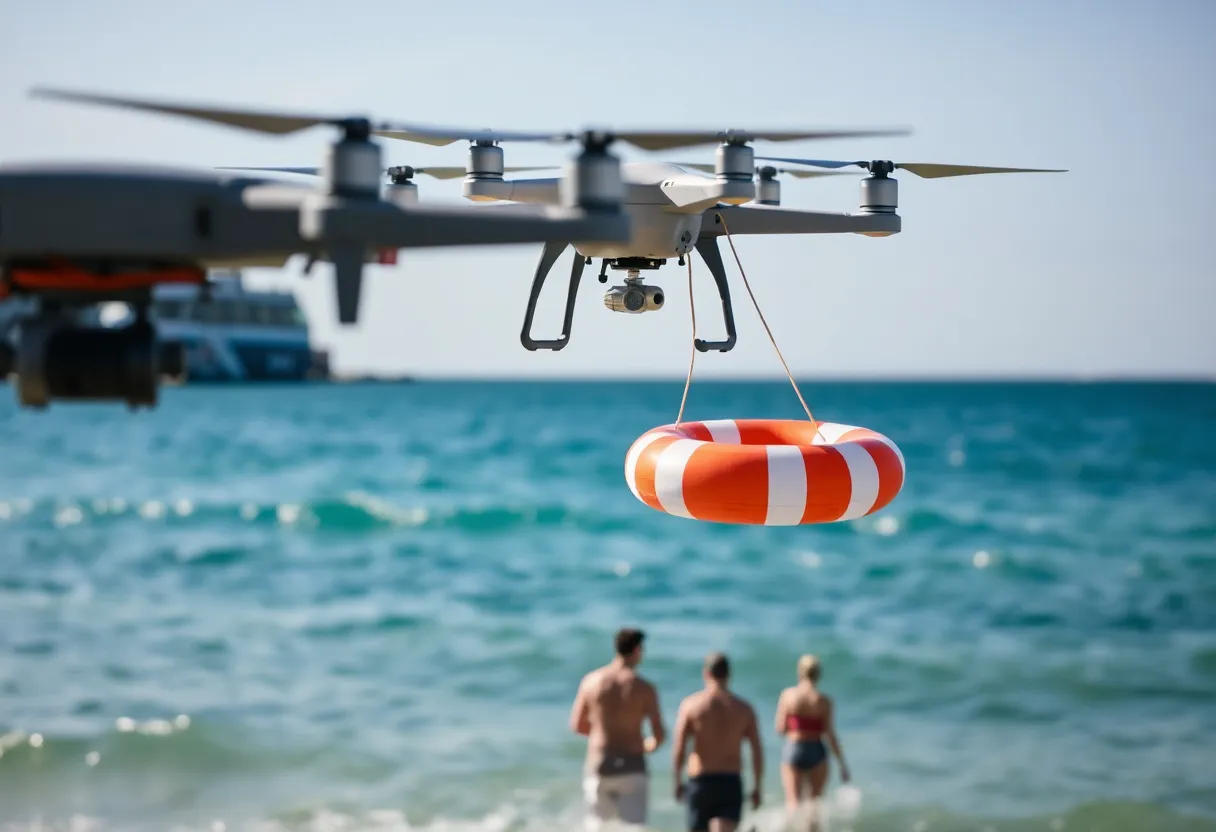News Summary
In a remarkable rescue at Pensacola Beach, a Florida man, unable to swim due to a seizure disorder, used his drone to deliver a flotation device to a drowning teenager. Andrew Smith’s quick thinking and effective use of technology became a lifesaving measure when traditional methods were not an option. After an initial failed attempt, he successfully dropped the device just in time, demonstrating the impact of community safety awareness and innovative problem-solving in emergencies.
Pensacola Beach, Florida — A Florida man utilized a drone to perform a daring rescue on May 15, 2025, saving a teenage girl from drowning amid hazardous rip currents at Pensacola Beach. Andrew Smith, who typically engages in shark fishing, used his drone to deliver a flotation device to the girl who was struggling in the water.
The incident unfolded shortly after Smith had finished work and decided to go fishing. While setting up, he was approached by a panicked girl seeking assistance. Despite his willingness to help, Smith was unable to swim himself due to a seizure disorder. The girl informed him that her friend was being pulled away by a rip current, prompting Smith to take action.
Initially, Smith attempted to send a flotation device via his drone but inadvertently released it too early. After regrouping and receiving a second flotation device from a nearby bystander, he made a successful second attempt. Smith carefully maneuvered the drone and managed to lower the flotation device to the girl, who had been in distress for around five minutes before receiving aid.
Local paramedics and lifeguards later indicated that without Smith’s second attempt at the rescue, the outcome could have been tragic. First responders arrived around five minutes after the girl secured the flotation device. She underwent evaluation by a medical team and was ultimately released in good health.
The scene was captured by bystander Robert Nay, who later praised Smith as a “true hero” for his quick-thinking actions. Smith highlighted the necessity of adhering to beach safety regulations, noting that beach safety flags were raised that day. A red flag indicating dangerous conditions was posted, and it was emphasized that there were no lifeguards present until after Memorial Day.
Smith’s drone, which is usually utilized to position bait for shark fishing, became an essential tool in the rescue effort. His seizure disorder has deemed traditional kayaking unsafe for him, making the drone an invaluable alternative for achieving water proximity without personal risk.
Following the incident, Smith expressed gratitude for the attention drawn to the rescue. A poignant moment occurred between Smith and the girl’s father, who expressed his appreciation, considering Smith a “guardian angel.” This heartfelt exchange underlined the impact of Smith’s actions not only for the girl but also for her family.
The circumstances surrounding the rescue act as a reminder of the importance of immediate response during emergencies and the effectiveness of technology in critical situations. Smith’s ability to adapt and use his drone for a life-saving intervention serves as an example of ingenuity and resourcefulness in dire circumstances. This incident also reaffirms the need for adherence to safety protocols, especially in beach environments where conditions can change rapidly.
In summary, Andrew Smith’s quick thinking and willingness to use technology for rescue efforts were crucial in saving a young girl’s life at Pensacola Beach, emphasizing community awareness and safety measures at the beach.
Deeper Dive: News & Info About This Topic
- CBS News
- The Guardian
- NBC News
- People
- WSVN
- Wikipedia: Rip Current
- Google Search: Drone Rescue
- Google Scholar: Drone Rescue Techniques
- Encyclopedia Britannica: Drone Technology
- Google News: Drone Rescue Florida

Author: STAFF HERE PETERSBURG WRITER
ST PETERSBURG STAFF WRITER The ST PETERSBURG STAFF WRITER represents the experienced team at HEREStPetersburg.com, your go-to source for actionable local news and information in St Petersburg, Pinellas County, and beyond. Specializing in "news you can use," we cover essential topics like product reviews for personal and business needs, local business directories, politics, real estate trends, neighborhood insights, and state news affecting the area—with deep expertise drawn from years of dedicated reporting and strong community input, including local press releases and business updates. We deliver top reporting on high-value events such as Grand Prix of St. Petersburg, Localtopia, and SHINE Mural Festival. Our coverage extends to key organizations like the St. Petersburg Area Chamber of Commerce and St. Pete Downtown Partnership, plus leading businesses in finance, manufacturing, and healthcare that power the local economy such as Raymond James Financial, Jabil, and Bayfront Health St. Petersburg. As part of the broader HERE network, including HEREJacksonville.com, HEREOrlando.com, HERETallahassee.com, and HERETampa.com, we provide comprehensive, credible insights into Florida's dynamic landscape.





